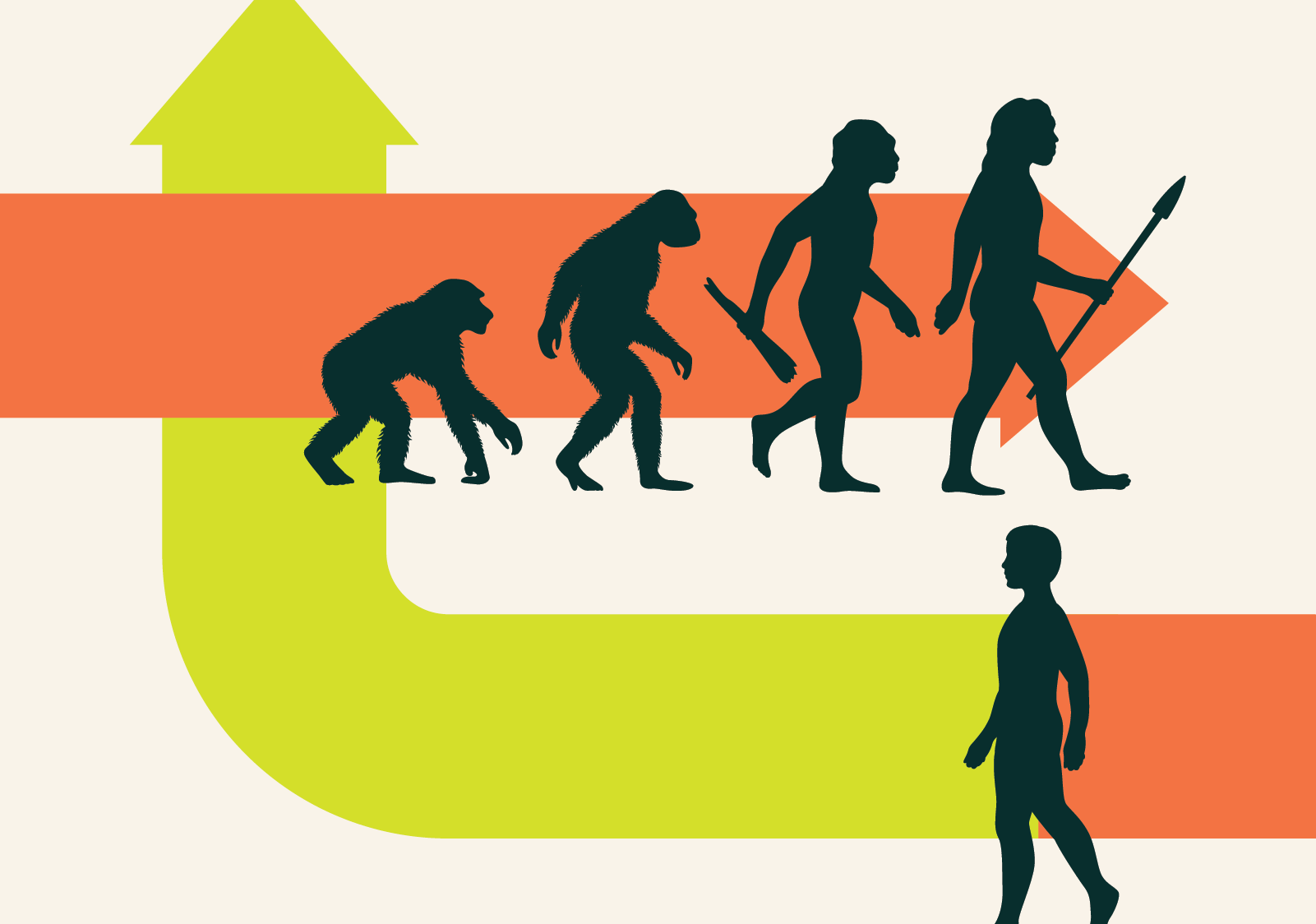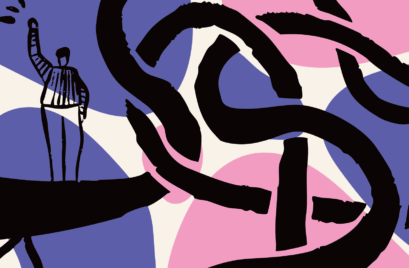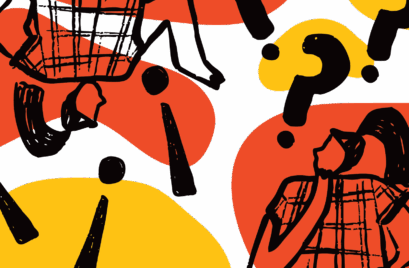
Scarcity mindsets, rooted in vigilance, fear, and defence, were once essential to human survival. Today, however, they are increasingly maladaptive when now, more than ever, we need collaboration, openness, and creativity. This article explores how scarcity remains our neurological and cultural default, how it inhibits self-direction and reflection, and why consciously cultivating presence, collaboration, and openness is necessary for flourishing in modern contexts. Drawing from neuroscience, leadership development theory, and contemporary psychological research, we argue for a deliberate transition: from survival to self-direction, from reaction to reflection, and from automatic fear to intentional freedom.
At every level of human experience, from personal relationships to global systems—we see the traces of an ancient inheritance: vigilance, defence, certainty. These instincts evolved to protect our ancestors from immediate threats in an unpredictable environment. In their context, scarcity was not a cognitive distortion but a daily reality.
Yet in many modern contexts, our environments have changed more than our internal wiring. We now face increasing ‘adaptive challenges, as well as technical ones’, challenges that cannot be solved by doubling down on old behaviours but require a new way of being. Where our ancestors needed vigilance, we now need presence. Where they needed to defend, we need to collaborate. Where they needed certainty, we need to stay open to new possibilities.
This article explores why scarcity remains our neurological and social default and offers pathways to consciously evolve beyond it.
Scarcity: An Evolutionary Legacy
Scarcity is fundamentally about threat detection. Research in evolutionary psychology shows that the human brain evolved to prioritise loss over gain, a phenomenon known as loss aversion (Kahneman & Tversky, 1979). Fearful stimuli activate the amygdala more rapidly and strongly than positive stimuli, enhancing survival but distorting modern decision-making.
In hunter-gatherer societies, hypervigilance, constantly scanning for dangers and hoarding resources, was a rational, even life-saving, strategy. As Harvard psychologist Dan Gilbert notes, ‘Our ancestors lived in a world of immediate returns, not delayed rewards’. Long-term planning, openness to ambiguity, and collaboration were luxuries, not necessities.
Fast forward to today: despite relative safety and abundance, our bodies still react as though scarcity lurks around every corner. Neurologically, the default mode network often replays fears and negative scenarios unless we consciously intervene through practices like mindfulness and reflective thinking (Raichle et al., 2001).
Thus, scarcity is not just a cultural phenomenon; it is embodied, neurochemical, and automatic.
Modern Scarcity: Cultural Reinforcement
In addition to evolutionary inheritance, scarcity is reinforced by contemporary culture. Our social systems: economic, educational, and organisational, often reward zero-sum thinking. “If I win, you lose” remains a pervasive underlying assumption.
At Performance Frontiers we identify the ‘scarcity cycle’ as one of the key blockers to innovation and collaboration. Scarcity is not just about material lack but also about perceived deficiencies: of time, respect, recognition, safety. Leaders operating from scarcity default to control, micromanagement, and rigid certainty, ironically creating the very conditions that stifle team performance and adaptability (Performance Frontiers, 2023).
In short, scarcity is socially contagious. It cascades through organisations and societies unless leaders and individuals consciously interrupt it.
The Call for Evolution: From Reaction to Reflection
Given the neurological and cultural defaults toward scarcity, the shift to abundance, openness, and intentional freedom is neither natural nor easy. It is, however, essential.
We propose three key shifts:
1. From Survival to Self-Direction
Self-direction requires moving beyond the automatic survival mode into intentional living. Carol Dweck’s concept of the growth mindset (Dweck, 2006) exemplifies this transition: believing that capabilities can expand through effort opens new pathways of possibility and reduces fear-based reactivity.
Rather than defending what we already know or have, we can focus on expanding what we are capable of creating together.
2. From Reaction to Reflection
Scarcity thrives in the gap between stimulus and response. Viktor Frankl famously observed, ‘Between stimulus and response there is a space. In that space is our power to choose our response’.
Cultivating reflective practices: mindfulness, dialogue, attuning to our bodies and the moment, expands that space. It moves us from knee-jerk reactions rooted in fear to thoughtful choices rooted in values and aspirations.
In leadership contexts, creating regular reflection pauses can disrupt cycles of reactivity and restore strategic, creative thinking.
3. From Automatic Fear to Intentional Freedom
Freedom is not the absence of constraints; it is the ability to choose how we meet them. Intentional freedom requires recognising when fear is operating beneath the surface and consciously choosing a different response.
This often means embracing vulnerability: risking new ways of thinking, collaborating, and acting even when the outcome is uncertain. In modern contexts, courage is not fighting a known enemy—it is staying open in the face of the unknown.
Practical Pathways
Moving from scarcity to abundance requires daily practice. Some practical strategies include:
Mindfulness Training: Enhances presence and disrupts fear-driven default modes (Siegel, 2010).
Psychological Safety: Building teams where vulnerability is safe enables collaboration and learning (Edmondson, 1999).
Curiosity over Certainty: Leaders and individuals can practice asking open-ended questions rather than defending existing beliefs.
Gratitude Practices: Actively noting abundance interrupts scarcity narratives at the emotional and neural level (Emmons & McCullough, 2003).
The aim is not to eliminate fear—it is to prevent it from unconsciously running our lives and leadership.
Scarcity is our evolutionary default. But it need not be our destiny.
To meet the adaptive challenges of our time, we must consciously evolve from survival to self-direction, from reaction to reflection, from automatic fear to intentional freedom. Where our ancestors needed vigilance, we need presence. Where they needed to defend, we need to collaborate. Where they needed certainty, we need openness.
This evolution is not guaranteed. It is a daily, deliberate practice, a choice to lead ourselves and others from a place of possibility rather than fear.
Leadership today begins not with answers but with presence, humility, and courage: the willingness to stand open and connected in an uncertain world.
References
Dweck, C. (2006). Mindset: The New Psychology of Success.
Edmondson, A. (1999). “Psychological Safety and Learning Behavior in Work Teams.” Administrative Science Quarterly.
Emmons, R. A., & McCullough, M. E. (2003). “Counting Blessings Versus Burdens: An Experimental Investigation of Gratitude and Subjective Well-Being in Daily Life.” Journal of Personality and Social Psychology.
Kahneman, D., & Tversky, A. (1979). “Prospect Theory: An Analysis of Decision Under Risk.” Econometrica.
Performance Frontiers (2023). Leadership in Uncertain Times: Transforming Scarcity to Abundance. [internal publication]
Raichle, M. E., et al. (2001). “A default mode of brain function.” Proceedings of the National Academy of Sciences.
Siegel, D. J. (2010). The Mindful Brain: Reflection and Attunement in the Cultivation of Well-Being.







